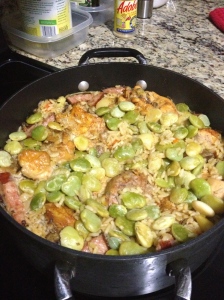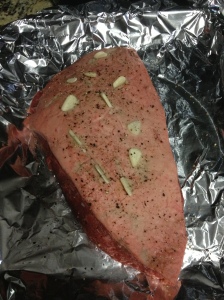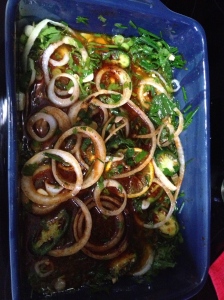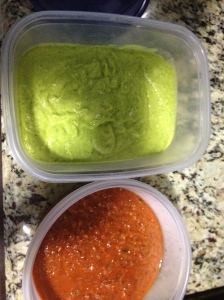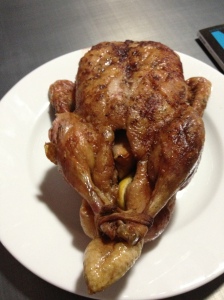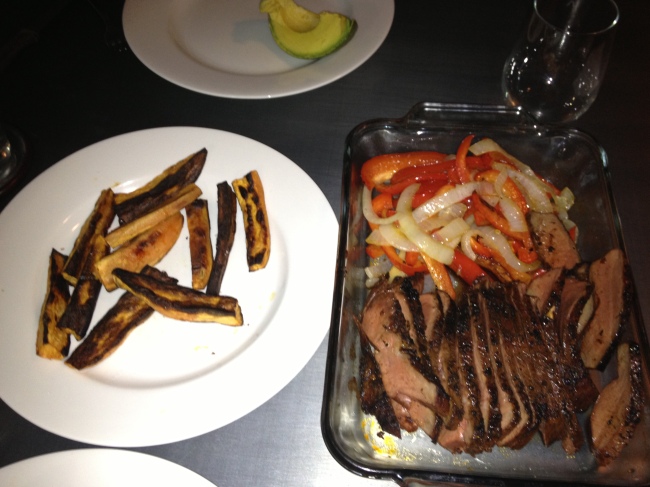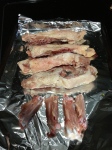Arroz con pollo is a big hit in our house. If you’re Latin or grew up around Latin people, you know what a wonderful bit of comfort food this dish is. I’m not sure my recipe is all that authentic, but it’s pretty good, and makes for an easy one pot meal. A more traditional arroz con pollo would use a Spanish style short grained rice, which I have used to great effect. I also like using parboiled converted rice too (Uncle Ben’s brand), as it will also yield nice separate grains (if you’re into that), and give a nice “pega” (explained below).
Arroz Con Pollo
Ingredients:
2 Cups of rice (thoroughly rinsed until water runs clear)
1 small onion, diced
3 cloves of garlic minced
3 carrots diced
1 whole chicken cut up (or use chicken parts, I often just put legs and thighs in there) with skin
1 package frozen peas or lima beans
1 28 oz carton of low sodium chicken stock
1 packet Sazon (with saffron), or even better 1 bunch of saffron threads bloomed in 1/4 cup hot water, or a couple of teaspoons of tumeric
1 bottle of lager style beer (optional), if not add a little water
olive oil for frying
salt and pepper to taste
Method:
In large pot, heat pan to medium high heat. Add olive oil, and brown chicken pieces (be careful not to crowd the pan) to a nice golden brown. Remove chicken pieces. Add a bit more oil and add carrot and onion. Saute for a few minutes to soften, and be sure to scrape the fond (brown bits) from the bottom of the pan, created by the chicken. Add garlic and stir until fragrant. Add rice and coat rice with oil. Add sazon (or bloomed saffron or tumeric) and liquid (beer and stock or stock and water). Add chicken and peas. Bring pot to a boil, and reduce to a simmer. Cover and cook until water is absorbed and rice is cooked.
If you’re using a good heavy or non stick pot, be sure to keep the rice on the heat for maybe 8 or 10 minutes after it’s done so you can get a nice “pega.” Pega is the Spanish word for crunch rice that forms at the bottom of the rice pot. If you use low enough heat you can get a wonderful beautiful crust on the bottom. It’s much easier to accomplish with the par boil riced as it’s lower in starch, but you can do it with other rice.
